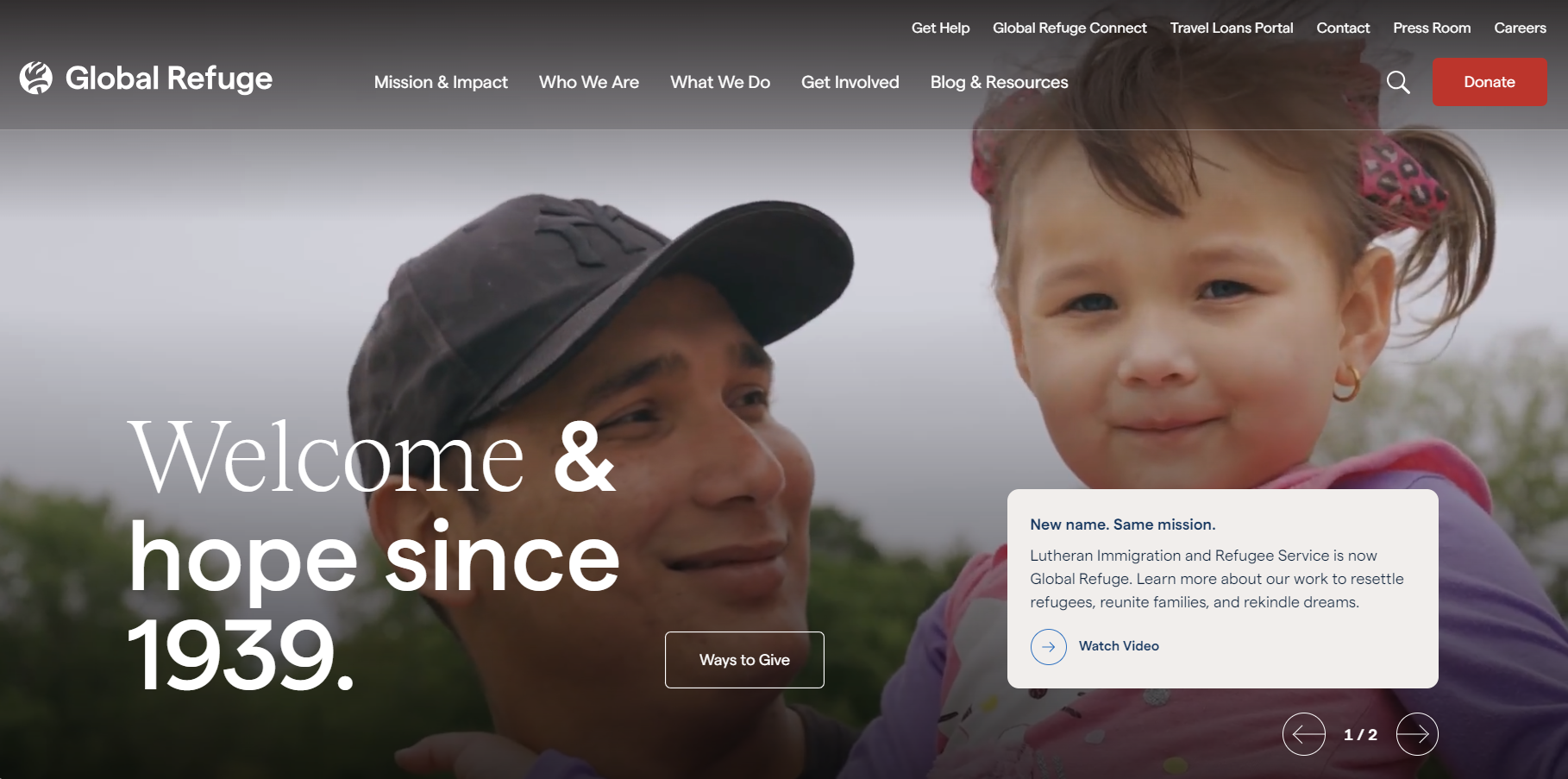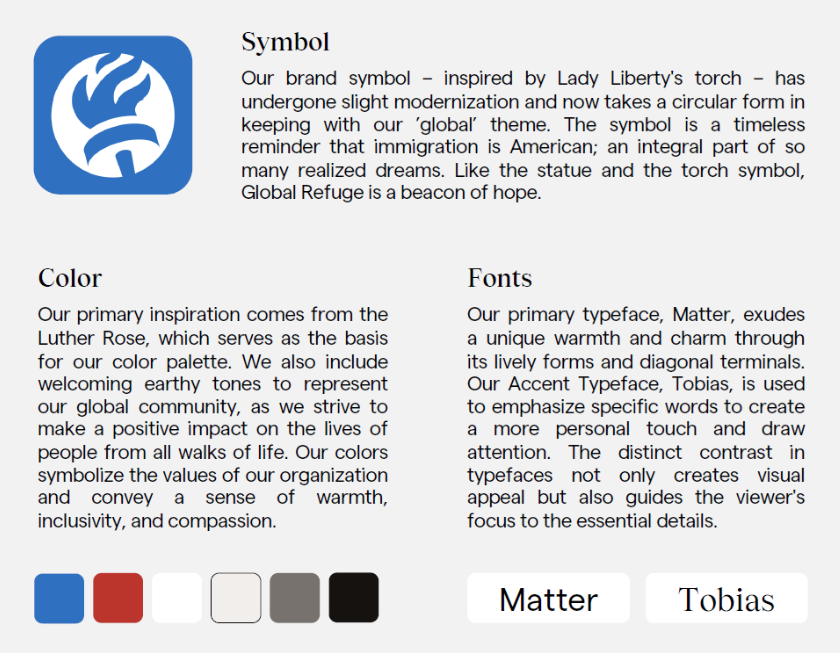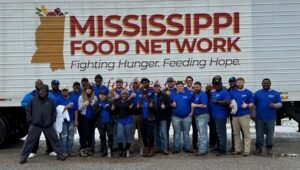Navigating a name change: Practical tips from Global Refuge, formerly LIRS
Changing a name is tricky but can reinvigorate an organization.

Any rebrand is challenging. People become emotionally attached to even the smallest nuance of logo design and brand colors. But doing a rebrand complete with a full name change? That’s a next-level challenge.
Lutheran Immigration and Refugee Service took on that challenge, transforming into Global Refuge. But what didn’t change in this extensive rebrand process is its commitment to advocating for refugees and helping them feel welcome and settled in the United States. In fact, that mission has only grown, as the 85-year-old organization ballooned from about 75 employees two and a half years ago to 560 today.
The non-profit’s board asked it to determine a name that would help set a bigger table for the many refugees around the world, including migrants at the U.S.-Mexico border. It also considered a full rebrand alongside the name change.
Here’s how LIRS planned and rolled out its new birth as Global Refuge.
What’s in a name?
LIRS began this journey with Legend Labs, a brand consulting company based in Austin, Texas. With Legend’s help, LIRS began to conduct deep research including a staff survey, donor survey and a national, statistically significant survey to better understand current knowledge of the brand and what compels people to donate to an organization like theirs. LIRS coupled this quantitative data with qualitative data based on interviews with board members, affiliates, former clients, government partners and others.
Several key points revealed themselves.
First was the key role of mission in non-profit names. “We know that in such a crowded brand space, you have to be able to very quickly grab somebody’s attention, and what does your name signal?” Erin Taylor, chief communications officer at Global Refuge, told PR Daily. “And if we were going to change our name, we wanted something that stayed true to our mission, but would allow us maybe quicker recognition in that critical moment where somebody’s trying to learn about you.”
LIRS also suffered from low name recognition, a true problem. Part of that may have been the acronym itself, which added to what Taylor called “alphabet soup” in the non-profit space.
The organization was getting closer to what it needed from a new name. But there was still one major decision to be made.
Reformers
“Lutheran” played a key role in the original name of the organization. And while it no longer appears in the title, it’s still a vital part of the charity.
“We are absolutely remaining a Lutheran faith-based organization. Our mission, vision and values have not changed,” Taylor said.
But the inclusion of the denomination in the name did cause some confusion among the organization’s constituents. The organization helps all, regardless of religion. But for many of LIRS constituents, the inclusion of “Lutheran” in the title was an important touchstone to faith, and removing it hurt.
Taylor said they recognize and honor that hurt, and that the team has taken time to travel across the country for face-to-face meetings with people skeptical of the name change. But she also stressed that Christian faith is still embedded in the name, albeit more subtly.
“Refuge is actually an important part of Psalm 46 in the Bible: ‘And so God is our refuge and strength, a very present help in trouble,’” Taylor quoted. “And that’s actually a passage that a lot resonates with a lot of members of the Lutheran faith.”
Ultimately, her team understands not everyone will agree with change, but that it, too, is a core part of Lutheranism.
“The Lutheran church is in and of itself a reformer, right? That’s how the church formed, started,” she said, referencing church founder Martin Luther, who famously nailed his 95 theses to a church door and started the Protestant Reformation.
“The idea that that our organization continues to evolve to meet needs and serve clients is really important to us.”
Rolling it out
After all this research and conversation, the organization settled on Global Refuge. It was shorter, made up of real words, and eliminated the need for an acronym. It set that bigger table that the board wanted while still retaining faith identity through the inclusion of “refuge,” with its nod to Psalm 46. It also more quickly helped people understand what they did. A quick round of market testing revealed that the name resonated with their target audiences too.
Now the creative endeavor was over and the hard work of rolling out logistical changes needed to begin.
The internal rollout was particularly critical.
“We see our staff as some of our best brand ambassadors, and folks that would need to be early on board in terms of being able to share the news and articulate the why behind it,” Taylor said.
That work started with an all-staff, in-person meeting in San Antonio, but continued with in-person, in-depth conversations.
“We tried to reach as many people in person as we could to talk in a transparent way about what this change was and what it would mean for the organization and, critically, what it wouldn’t mean for the organization — again, that the work was not changing,” Taylor said.
The comms team also created a variety of collateral materials, ranging from an in-depth 15-page FAQ, as well as a physical at-a-glance one sheet on the rebrand.

The one-sheet also included key messages and even an elevator pitch – a few words employees could share if they met someone for only a brief moment. The team even went beyond just sending collateral materials by providing training to help team members adapt the talking points for their particular audience.
The internal and external response to the rebrand has been positive. But most important has been the incorporation of client voices into their new identity.
“Beyond the name, it’s, it’s the storytelling, it’s the inclusivity, it’s the welcoming messaging that we’re building in that will then be reflected across our comms materials,” Taylor said. “So we’re really jazzed about that, too.”
Allison Carter is editor-in-chief of PR Daily. Follow her on X or LinkedIn.







